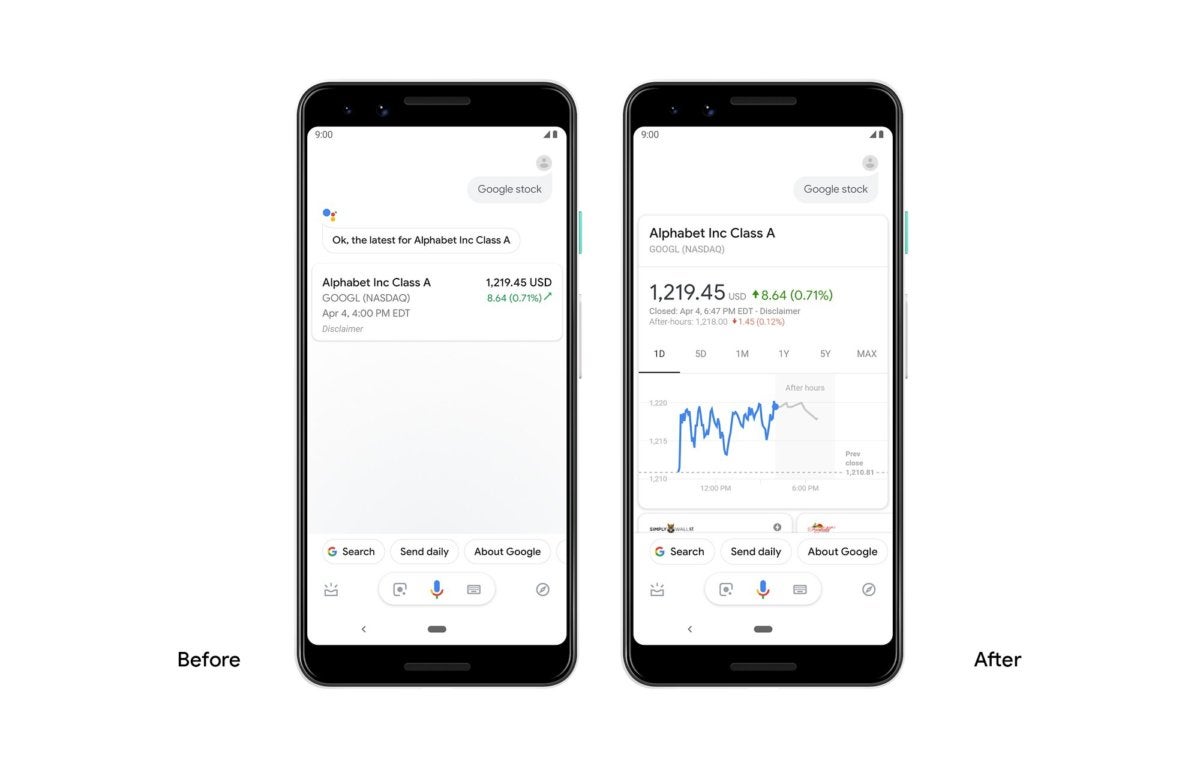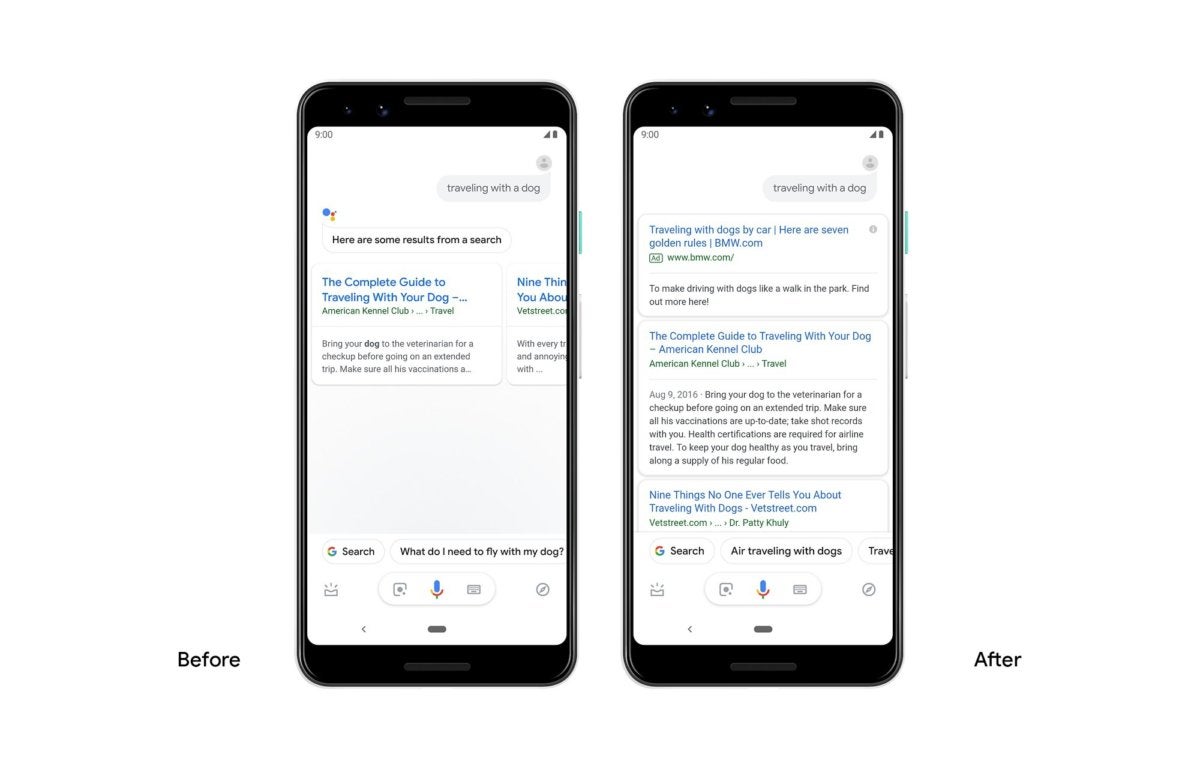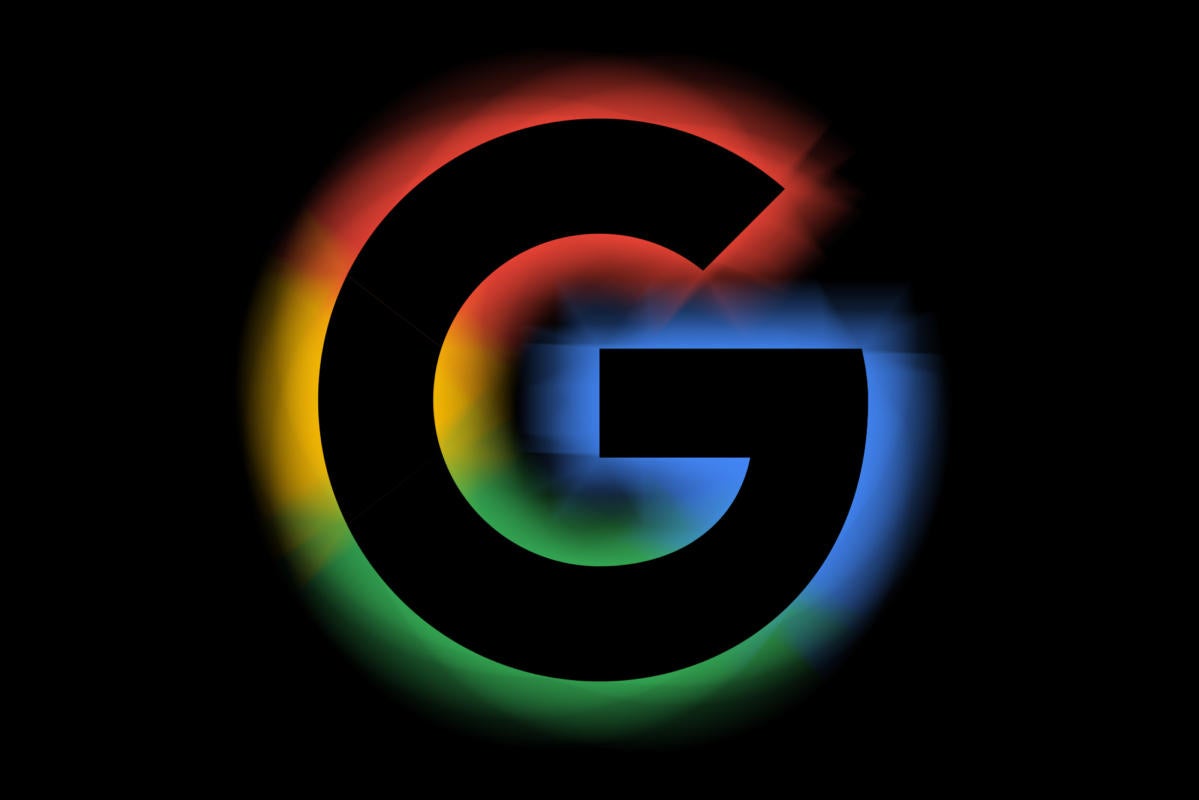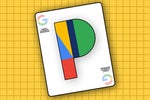A funny thing is happening in the land o' Googley matters right now. It's actually a collection of smaller things that, taken by themselves, may not seem like much. But add 'em all together, and you've got quite the transformative trend a-cookin'.
The trend, in short, revolves around getting down to business — specifically, the business of making money off of you and me and everyone else who uses Google services. For a while now, y'see, Google has been focusing on new areas that don't directly fit in with the company's long-standing main business model. Google, as we all know, makes its money primarily from selling and showing ads that are custom-tailored to your interests at any given moment. But many of Google's newer services have remained mostly ad-free since their starts.
Sure, these services still collect data about us, which can then be used to better target ads in traditional web search and other such places — but more and more, we tech-loving Homo sapiens aren't using traditional web search to get all of our information, especially when we're on mobile devices or other modern-tech gizmos. In the longer-term future, if Google wants to keep its cash cow mooing, it's gotta find a way to replicate its ad system in other areas and keep its business model relevant to our evolving tech habits.
Well, gang, that's precisely the transformation that appears to be picking up pace as we speak. And it's happening on several overlapping fronts.
Grab the nearest glass of milk, and let's dive in.
The nucleus of Google's ad-injecting transformation
The biggest and perhaps most significant part of this shift is happening with the biggest and arguably most significant part of Google these days: the Google Assistant. After testing the integration of ads within Assistant results on phones earlier this year, Google has now rolled out a new format for displaying answers from Assistant on Android: a card-based interface that moves away from the super-simple, "only the answer you need" model originally introduced with Assistant and relies instead on more of a hybrid arrangement. The idea seems to be to combine that contemporary single-answer system with a more traditional search-like approach that provides a full set of standard web results along with a primary suggested answer.
 Google
GoogleOn searches for which Assistant doesn't have a single suggested answer, results are starting to be shown entirely in a standard search-like list — one that scrolls up and down vertically instead of being placed inside a small horizontal bar.
 Google
GoogleThis all may just seem like a sensible visual improvement, but there's an important asterisk lurking beneath the surface: By moving to this sort of model, Google gains the ability to display the same sorts of ads it's long shown within search — right inside the Assistant's answers. The company even casually mentioned that fact in the middle of its announcement:
When relevant, these results may include the existing ads that you’d see on Search today.
For now, the change is rolling out only to Android phones, but it only makes sense that it'll make its way to other mobile devices and likely the screen-packing Home Hub and Smart Display products before long, too.
The bigger Assistant ad picture
The injection of ads directly into Assistant feels like a culminating step in a process we've been watching unfold for years. It's become increasingly clear over time that Assistant is turning into the central focus for almost everything Google does — and for good reason: As we all spend less time surfing the open web and more time using apps and connected devices, the future of the online ad industry is being threatened by irrelevance. The future, as the thinking goes, isn't in traditional box-on-a-page web search but rather in interacting with all the stuff around us. And if Google Assistant is the genie inside all that stuff, at the end of the day, we're all still Google customers.
Putting Assistant everywhere, in other words — and getting us in the habit of relying on it as an integral part of our work and personal lives — ensures Google's survival as the world's default search engine, even in a world where we frequently don't search in a traditional way.
And you'd better believe Google has been closely considering that fact and the challenges surrounding it for quite some time. During an investor event in March, as the incredibly astute and attractive listeners of my new podcast know, Google's chief business officer directly acknowledged that Assistant's audio-oriented nature wasn't ideal when it comes to revenue — because ads just don't fit into that scenario without being incredibly awkward and obtrusive.
He went on to say that Assistant would become much more "interesting" from a business perspective once responses were routinely accompanied by on-screen visuals, according to Reuters. That progression, he noted, would open the door to revenue-generating possibilities that'd be "very similar" to the classic Google search setup.
With all of that context in mind — and seeing the early implementation of ads into Assistant now — it suddenly makes an awful lot of sense that Google is slowly pushing away from the audio-centric Assistant experience and instead nudging us more and more toward situations where Assistant can be paired with a screen.
Speaking of which...
Ad injections beyond just Assistant
Assistant aside, Google is currently taking steps to bring direct monetization into a few other noteworthy areas. First is the Android TV platform, which is supposedly set to in the coming months after years of neglect.
Android TV is another area that has long offered indirect value to Google — by allowing the company to collect info about your TV viewing habits and then use that data to serve up more effective ads for you on the web — but, again, web search ain't what it used to be. And now, Google is experimenting with bringing ads right into the Android TV interface, thus taking the platform from being an intermediary in its main business model to being a primary, front-line player.
Owners of Sony-made Android TV devices started noticing a new row of "sponsored" content on their home screens earlier this month — something that's apparently part of a new "pilot program" controlled directly by Google. And unlike other parts of the Android TV interface, those paid suggestions provide no easy option for opting out and sending them away.
Then there's Maps, which a recent report indicates is on the brink of becoming Google's "next big money-maker" as the company considers ways to make advertising a core part of the service. Maps, even more than Android TV, provides tons of that indirect value for Google — by giving it a perfectly valid reason to constantly monitor your location and keep track of every business you frequent, which is ad-targeting gold — but now, Bloomberg reports, Google is looking at bringing more direct integration of ads into the Maps apps. Google has also recently started charging significantly more for third-party apps to access its mapping technology, the report mentions.
This move, too, was foreshadowed quite clearly. In a July 2018 earnings call, Google CEO Sundar Pichai described Maps as a "tremendous asset" and said the company was exploring "the commercial opportunities" around it and "developing [its] views on how [it] can bring monetization experiences" to the service. In the more recent October 2018 call, Pichai indicated that Google was "definitely launching and experimenting with newer ad formats on Maps itself" and was in the phase of testing them, "making sure the user experience works," and making sure the setup would "deliver value for advertisers."
See how this all ties together?
Google has always been an ad company at heart, so it only makes sense that its plan would adapt and evolve to match the changing way we use technology. Still, viewed together under that unifying umbrella, these moves mark the first time Google has taken such wide-reaching steps to monetize its post-search interfaces and frame those services not just as indirect assets to the company but as direct money-makers as well.
For anyone who watches Google services as closely as we do, that's a pretty significant shift to see.
Sign up for my weekly newsletter to get more practical tips, personal recommendations, and plain-English perspective on the news that matters.

[Android Intelligence videos at Computerworld]




















































































